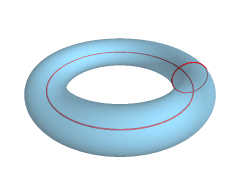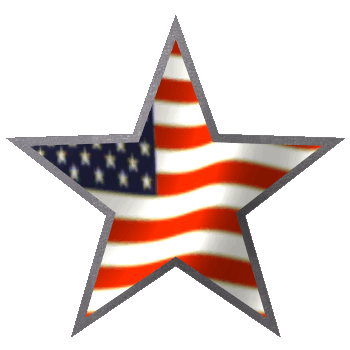|
(2016
midterm assignment) Model Student Midterm answers 2016 #1: Long Essays (Index) |
LITR 4328 |
 |
Clark
Omo
The American Renaissance: A Tale of Enlightenment
My
journey through the American Renaissance has been an enlightening one. The
knowledge I have received during the course of this class has rejuvenated and
further deepened my understanding of the literature this nation has produced. It
has provided a more in depth understanding of how the mechanics of Romanticism
and Transcendentalism employed by the authors we have so far studied (Emerson,
Whitman, Poe, Cooper and so forth) and how they defined these genres for
America. Furthermore, it has also explored areas of literary mechanic I did not
know before. Particularly in regards to the “correspondence” in
Transcendentalism and Romanticism. Before coming to this class, I had never
heard of this mechanic, not in grade school or anywhere else. I understand (or
at least I hope I do) now how the Transcendentalists drew parallels among the
body and nature. I also gained a broader definition of what Romanticism is,
particularly with its use of the “dark lady and fair lady” dichotomy. I had
never heard of this aspect either, but I’m glad I have. I certainly saw the
examples that existed in the literature we’ve read, and I also can see it in
current literature, if I look close enough.
I
also might add I gained some insight into the art of teaching, since I plan on
being a teacher myself one day. I saw how discussion and the allowance of
student participation in the administration of course material aided in the
exploration of our topics. Discussion helped me, personally, see some things
that I had never thought and probably never would have thought of (at least not
in a focused amount of time) had we not brought them up in class. The example of
this that struck me the most was the discovery of the pumpkin in
The Legend of Sleepy Hollow serving
as no more than a method of whitewashing gory material. Now my belief in the
legend has been forever punctured, but not quite deflated. Furthermore,
discussion promotes an environment that encourages growth. It helps one see
things never thought of or perhaps were thought of before, but not explored in
any great detail.
And
through the use of discussion, I believe I have formed a definition, or at least
my definition, of the American
Renaissance. The American Renaissance was the equivalent to the Age of
Exploration for American authors. At their time, America was still a budding
nation. It was a totally new idea, never before explored by any other nation in
the Old World. Because of this, our nation not only had to create a government
and a set of laws that would unite the people as a single nation, but also had
to create a culture that would set us apart from the world around us. The
American Renaissance furthered this goal tremendously, for, as history has shown
us, a good deal of the knowledge humanity possesses regarding its past comes
from the written record. A hundred years from now, after America has suffered
the soon to be nuclear-induced zombie apocalypse and the survivors finally
emerge from the ashes, they will look for the remains of what America once was.
Undoubtedly, they would find the works of the authors we have studied. The works
forged in the American Renaissance defined us as a people. They created a unique
style, a distinct realm of literature that belongs to America and America alone.
This is particularly true with Cooper in my opinion. The dark and forbidding
wilds, the struggles of man as he tries to make his future in a new land, and
the core of American ruggedness and strength that is Hawkeye are just a few of
the examples in Cooper’s work that serve to distinguish American literature from
the rest of the world.
Romanticism also played a big part in how I now define the American Renaissance.
I have seen the themes, motifs, and mechanics that are prevalent in many of
these works that I have studied that relate them to the Romantic form of
literature. I have seen how Transcendentalism works as a genre. Particularly in
the essay “I Sing the Body Electric” by Whitman did I see the most apparent
examples of Transcendentalism, which in of itself is a guise of Romanticism,
though certainly not the darkest. The way in which Whitman draws parallels
between everyday acts, such as “the march of firemen in their own costumes” with
the Transcendental theme of an ethereal nature, such as within the same line
“the play of masculine muscle through clean setting trowsers [trousers] and
waist-straps”. Here, Whitman has created a sort of linkage between the simple
and unadorned mundane with that of something ethereal, just by watching a line
of firemen march down the street. However, the greatest examples of Romanticism
that I found in this class were in the works of Edgar Allan Poe, specifically in
Ligeia.
Ligeia contains some of the most
powerful images that aptly display the power of the Romantic, particularly the
Gothic: Poe’s drawing of the contrast between the “dark lady” Ligeia with that
of the “fair lady” Rowena, the narrator’s meeting with Ligeia in “some large,
old decaying city near the Rhine”, and his description of Ligeia possessing “a
lofty and pale forehead”, skin that “rivalled the purest of ivory” and
“raven-black, the glossy, the luxuriant and naturally-curling tresses” that form
Ligeia’s hair. And of course, there is the vision, resurrection, or
opiate-induced hallucination of Ligeia’s body through that of the dying Rowena.
From
here, I think that a few comments on the quality of this writing are deserved.
True, America has neither the traditions nor the histories of many of the
European countries of which she is the offspring. Nonetheless, she has
definitely made her mark on the world, and the literature studied in this course
perfectly demonstrates that. The pure music that Poe plays while writing these
poems is phenomenal. And, although the critics may rend it to bits,
The Last of the Mohicans displays a
fine quality as well. The
Mohicans contains, as D.H. Lawrence
put it, “Pictures! Some of the loveliest, most glamorous pictures in all
literature.”. And even after Mark Twain observed that “There are nineteen rules
governing literary art in the domain of romantic fiction . . . . In
Deerslayer Cooper violated eighteen
of them. . . .”, he nonetheless concluded, as I have, that “Counting these out,
what is left is Art. I think we must all admit that.” The authors
Overall, I have so far enjoyed my educational journey through the American
Renaissance. I have examined things in closer detail, particularly the
musicality of Poe’s writing, than I have in previous readings and experiences. I
experienced new terms that I never knew of prior to entering this course, and I
also have seen some authors that I did know of either. Yet, out of all the
authors we have read so far, I particularly liked the works of Poe. He has
definitely earned his place in the pantheon of American writers. And, though I
agree with some of the criticisms Twain has brought forward regarding Cooper, I
do not hold any of them against the author or his creations. Cooper had a
purpose when he wrote. I think he fulfilled it. So far, the experience I have
had in this class has been a treat, and I look forward to walking the future
paths this course will light for me.
 |
 |
 |
